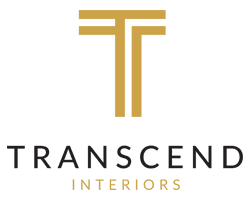DECORATIVE DESIGNER POSITION
DECORATIVE DESIGNER POSITION
DECORATIVE DESIGNER
Compensation – Commission
$60,000.00/year + earning potential when required sales volume is met.
Manage own schedule
Benefits available
REQUIREMENTS
Meet Directly with Clients
One of the most significant duties of a Decorative Designer is meeting directly with clients before, during, and after working on their space. In the initial meeting, the Decorative Designer gathers information related to the client’s budget, timeline, and aesthetic and functional preferences. Throughout the decoration process, the client provides the Decorative Designer with feedback and direction.
Develop Decorative Plans
After meeting with clients, the Decorative Designer develops decorative plans and presents them to the client. They may present big-picture options and ideas to the client, who then selects the idea they want to pursue. During this process, the interior decorator also determines whether a plan is feasible based on a client’s budget and timeline.
Select Decorative Elements
The Decorative Designer’s primary duty is selecting a variety of decorative elements for a client’s home, office, or other space (such as a retail store). Working within the client’s budget, the Decorative Designer chooses wall paint colors and finishes, furniture pieces, and textiles such as rugs and upholstery. They may also select art to hang on walls or feature on shelves.
Install and Arrange Decorations
The Decorative Designer determines where to place the selected furniture and fixtures. In this aspect of the role, the Decorative Designer considers both aesthetic and practical considerations, with particular emphasis on unity and flow. After initially placing decorative elements, the Decorative Designer may fine-tune and rearrange the room on their own or with client input.
Manage Budgets and Schedules
Decorative Designers manage budgets and schedules throughout the decoration process. Budget management involves not only ensuring that decorations and furniture stay within the client’s budget, but also ensuring profitability for the interior decorator. Managing schedules and deadlines is equally important, as Decorative Designers must maintain a steady workflow and meet client expectations to stay profitable.
SKILLS & QUALIFICATIONS
Decorative Designers work closely with clients to choose decorative elements for rooms or entire houses. Most professionals possess the following skills:
Design Skills – Decorative Designers are well-versed in the principles and practices of design, and know how to balance color, flow, and unity to ensure that all decorative elements work cohesively
Creativity – This role requires a high level of creativity, as Decorative Designers need to come up with creative ways to reinvent spaces, which can include selecting new furniture or updating finishes
Client Service – Decorative Designers need excellent client service skills and the ability to make changes to ideas and rooms to accommodate the client’s wishes throughout the decoration process
Financial Management – Decorative Designers must keep their projects within the client’s budget while also maintaining profitability
CONTACT
Please submit resume and digital portfolio to charlotte@transcendinteriors.net
REQUIREMENTS
Meet Directly with Clients
One of the most significant duties of a Decorative Designer is meeting directly with clients before, during, and after working on their space. In the initial meeting, the Decorative Designer gathers information related to the client’s budget, timeline, and aesthetic and functional preferences. Throughout the decoration process, the client provides the Decorative Designer with feedback and direction.
Develop Decorative Plans
After meeting with clients, the Decorative Designer develops decorative plans and presents them to the client. They may present big-picture options and ideas to the client, who then selects the idea they want to pursue. During this process, the interior decorator also determines whether a plan is feasible based on a client’s budget and timeline.
Select Decorative Elements
The Decorative Designer’s primary duty is selecting a variety of decorative elements for a client’s home, office, or other space (such as a retail store). Working within the client’s budget, the Decorative Designer chooses wall paint colors and finishes, furniture pieces, and textiles such as rugs and upholstery. They may also select art to hang on walls or feature on shelves.
Install and Arrange Decorations
The Decorative Designer determines where to place the selected furniture and fixtures. In this aspect of the role, the Decorative Designer considers both aesthetic and practical considerations, with particular emphasis on unity and flow. After initially placing decorative elements, the Decorative Designer may fine-tune and rearrange the room on their own or with client input.
Manage Budgets and Schedules
Decorative Designers manage budgets and schedules throughout the decoration process. Budget management involves not only ensuring that decorations and furniture stay within the client’s budget, but also ensuring profitability for the interior decorator. Managing schedules and deadlines is equally important, as Decorative Designers must maintain a steady workflow and meet client expectations to stay profitable.
SKILLS & QUALIFICATIONS
Decorative Designers work closely with clients to choose decorative elements for rooms or entire houses. Most professionals possess the following skills:
Design Skills – Decorative Designers are well-versed in the principles and practices of design, and know how to balance color, flow, and unity to ensure that all decorative elements work cohesively
Creativity – This role requires a high level of creativity, as Decorative Designers need to come up with creative ways to reinvent spaces, which can include selecting new furniture or updating finishes
Client Service – Decorative Designers need excellent client service skills and the ability to make changes to ideas and rooms to accommodate the client’s wishes throughout the decoration process
Financial Management – Decorative Designers must keep their projects within the client’s budget while also maintaining profitability
CONTACT
Please submit resume and digital portfolio to charlotte@transcendinteriors.net


